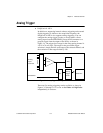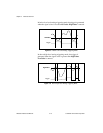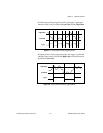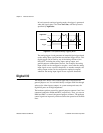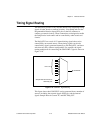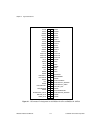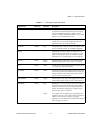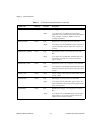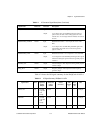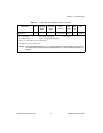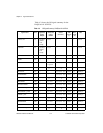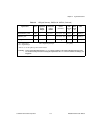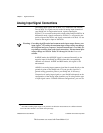
Chapter 4 Signal Connections
National Instruments Corporation 4-3 DAQCard E Series User Manual
Table 4-1.
I/O Connector Signal Descriptions
Signal Name
Reference Direction Description
AIGND
— — Analog Input Ground—These pins are the reference point
for single-ended measurements and the bias current return
point for differential measurements. All three ground
references—AIGND, AOGND, and DGND—are connected
together on your DAQCard E Series card.
ACH<0..15> AIGND Input Analog Input Channels 0 through 15—Each channel pair,
ACH<
i,
i
+8> (
i
= 0..7), can be configured as either one
differential input or two single-ended inputs.
AISENSE AIGND Input Analog Input Sense—This pin serves as the reference node
for any of channels ACH<0..15> in NRSE configuration.
DGND — — Digital Ground—This pin supplies the reference for the
digital signals at the I/O connector as well as the +5 VDC
supply. All three ground references—AIGND, AOGND,
and DGND—are connected together on your DAQCard.
DIO<0..7> DGND Input or
Output
Digital I/O signals—DIO6 and 7 can control the up/down
signal of general-purpose counters 0 and 1, respectively.
+5 V DGND Output +5 VDC Source—These pins are fused for up to 250 mA of
+5 V supply. The fuse is self-resetting.
SCANCLK DGND Output Scan Clock—This pin pulses once for each A/D conversion
in the scanning modes when enabled. The low-to-high edge
indicates when the input signal can be removed from the
input or switched to another signal.
EXTSTROBE* DGND Output External Strobe—This output can be toggled under software
control to latch signals or trigger events on external devices.
PFI0/TRIG1 DGND Input
Output
PFI0/Trigger 1—As an input, this is either one of the PFIs or
the source for the hardware analog trigger. PFI signals are
explained in the
Timing Connections
section later in this
chapter. The hardware analog trigger is explained in the
Analog Trigger
section in Chapter 2.
As an output, this is the TRIG1 signal. In posttrigger data
acquisition sequences, a low-to-high transition indicates the
initiation of the acquisition sequence. In pretrigger
applications, a low-to-high transition indicates the initiation
of the pretrigger conversions.



